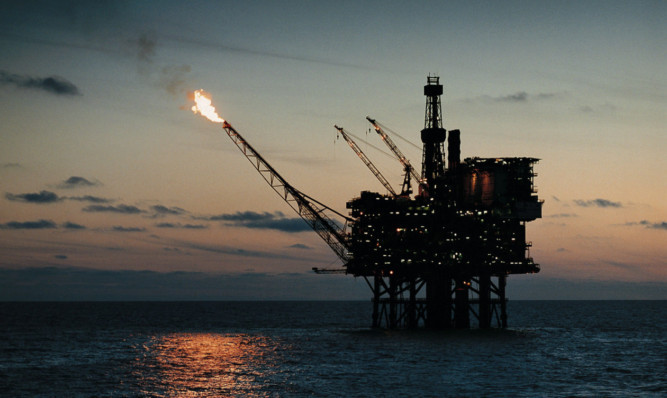Suggestions of a post-independence referendum oil boom are not supported by evidence, according to researchers.
Analysis by the Scottish Government predicted that oil tax revenue could be as high as £11.8 billion by 2017-18, generating as much as £57bn in the six years up to that point.
Finance Secretary John Swinney said Scotland should anticipate a “massive North Sea boom” in the early years after the 2014 referendum, contrasting with more cautious oil tax revenue estimates from the Office for Budget Responsibility.
A new report by the Centre for Public Policy for Regions (CPPR) said even if North Sea revenue turns out towards the top of the range projected by the Scottish Government “it would not mean a return to anything like the level of revenues seen in the early 1980s”, and “to suggest some sort of new oil-tax revenue boom is about to emerge is not readily supported by the evidence”.
The CPPR said it looked at both the Scottish Government and OBR analyses and that, under most scenarios, North Sea tax revenue is expected to be flat or falling in real terms and remain well below its 2011-12 level.
Its report highlights the complexities of scenario planning in relation to oil revenue, and urged caution.
The “available official data on Scotland’s public sector expenditures and revenues, and clarity on the preferred future spending and tax-raising policies needed to assess the potential pros and cons of greater fiscal autonomy remain seriously limited”, it says.
The CPPR backed Fiscal Commission recommendations for Scotland to aim for an onshore balanced budget in the long term, allowing for all oil and gas receipts to be saved in an oil fund.
Report author John McLaren said: “Scotland’s mainland fiscal balance, excluding the North Sea, is very heavily in deficit, both in absolute terms and relative to the UK’s. This position improves considerably once a geographic share of North Sea revenues is added in.
“However, as the Fiscal Commission pointed out, in the long run the objective should be to achieve as close to an overall onshore budget balance as possible.”
Co-author Jo Armstrong said: “The position on future North Sea revenues is highly complex. Assuming a cautious oil price for public expenditure planning purposes would lessen the risk of a shortfall and be consistent with the Scottish Governments carbon reduction targets.”
Labour’s Ken Macintosh MSP said: “Here we have yet another independent report confirming what John Swinney has been saying to his SNP cabinet colleagues in private and reminding us of the need for caution rather than an over-reliance on oil revenues.”
Conservative finance spokesman Gavin Brown said: “This once again shows the Scottish Government is more or less out there on its own when being overly optimistic of the role oil can play. The SNP plans rely heavily on oil revenue being used for current spending.
“But if that revenue is less that the Scottish Government says, as many anticipate it will be, that would leave an enormous gap to plug every year. That in turn would have a huge impact on public spending, something the SNP seems unwilling to admit.”
Green party co-leader Patrick Harvie said: “This analysis makes important points about the idea of an oil fund, and the value of reserves given the need not to extract and burn every last drop.
“I believe voters who are as yet undecided about next September’s referendum will be open to the idea of Scotland deciding how future revenues are invested, and Scottish Greens will continue to argue for investment in cleaner technologies and longer-term industries.”
